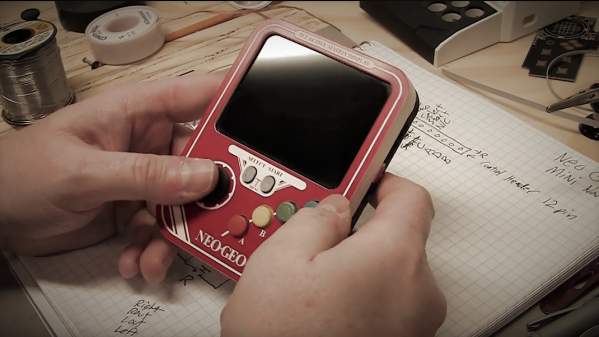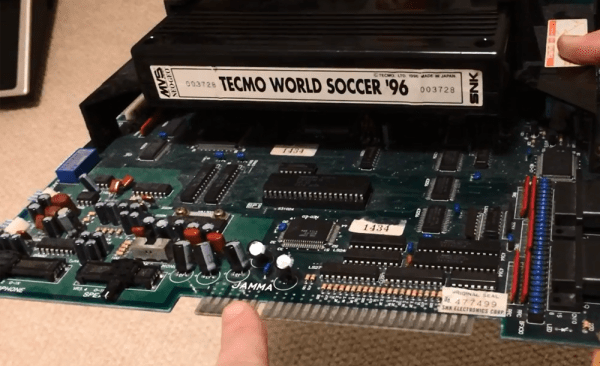It feels like that Neo Geo Mini kinda came and went. All the hype surrounding the idea of having a tiny usable arcade machine melted away when the original system’s fans first touched the “non-clicky” joystick. While it was encouraging to see the inclusion USB-C power, there was no internal battery to allow players to use the system untethered. Not satisfied with the product in its current state [Ben Heck] shot a video detailing his latest portable creation using the Neo Geo Mini internals.
The design of the portable focuses around incorporating aspects of the Neo Geo MVS arcade system that the Neo Geo Mini lacks. The D-pad includes tiny micro-switches, or as [Ben Heck] calls them nano-switches, for a decidedly more tactile feel. He was able to re-purpose the speakers and headphone jack from the original PCB along with the 4:3 aspect ratio LCD. The custom faceplate wraps everything in the familiar red and white insignia while the 3D printed face buttons come in the classic red, yellow, green, and blue. Don’t worry, they are finally in the right button configuration here.
It’s great to see [Ben Heck] still making portable magic since his YouTube show ended earlier this year. He has contributed a lot to the modding community over the years, and there are plenty of helpful tips scattered throughout this Neo Geo Mini portable video as well. Note that the build is split into two separate videos (part two is below). We look forward to many more projects like this from [Ben Heck] in the future.
Continue reading “Neo Geo Mini Gets The Ben Heck Portable Treatment”


















